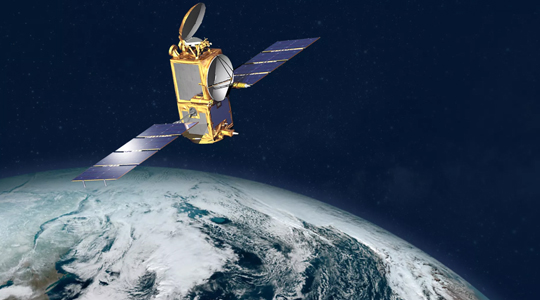
Constellations spoke with Buffy Wajvoda, Global Leader for Aerospace and Satellite Solutions Architecture at Amazon Web Services, (AWS) about the difference between artificial intelligence (AI) and generative AI (GenAI), its potential contribution to the space industry and risks associated with it.
While traditional AI uses machines or algorithms to produce intelligence for problems that are either cost or resource-prohibitive, Wajvoda explained, “Generative AI, on the other hand, is the ability to use AI/ML [artificial intelligence/machine learning] to generate new things.”
GenAI Could Speed Space Industry Growth
Wajvoda reacted to a recent McKinsey estimate that GenAI technology could add between $2.6 and $4.4 trillion dollars of economic activity annually across industries by saying, “It’s still early days of generative AI, but we definitely see a bunch of promise, and especially in the space industry.” She explained that NASA is experimenting with generative AI to build new and innovative parts for their spacecraft. “The areas I see generative AI being the most beneficial are analysis, digital engineering and manufacturing operations.” She discussed the use of AI for geospatial predictions. “So, taking pictures of the Earth from space and then predicting where maybe a natural disaster is going to happen, where there’s going to be a change in economic activity, all through the use of generative AI and pictures.”
She referred to retrieval augmentation generation, where the manuals for operating a satellite or a rocket could be put into a model that would build that information in a secure way, as another example. “And then instead of an operator needing to remember, that was page 377 where I knew I needed to do this if this red blinky light came on, you’ll just ask generative AI, ‘Generative AI, what do I do with this?’”
Augmenting Human Space Industry Efforts
Wajvoda said that be it mission planning, operator training or disaster recovery, generative AI will increase the speed and accuracy of each. “Using something like generative AI is going to allow the individuals working in that part of the mission the ability to work faster and innovate faster, to see an actual spacecraft or a rocket in 3D, be able to model when certain activities happen, whether it’s bad radiation or, at this point, with all of the space activity going on in the belts, even something like space collision.”
It’s No Longer If It Happens, It’s…
Much has been written about the potential for good that AI may usher in, and almost equally as much about its potential risks, particularly with respect to cybersecurity. “I would say that whether we’re talking about generative AI or not, cyber is no longer an ‘if it happens,’ it is a ‘when it is going to happen.’ Companies just need to be more flexible and vigilant…on detecting and mitigating cyberattacks,” said Wajvoda. “But with AWS services, you can reduce the undifferentiated heavy lifting of storing that information, parsing that information, understanding that information, and instead produce actionable insights that you can take against cyber.”
Wajvoda concluded the interview by saying, “While I can postulate on all the ways that generative AI is going to change industries and change the space industry, it’s going to be so much bigger and so much more inspiring than anything we can ever imagine right now.”
Click here to learn more about what’s driving GenAI to the mainstream, how AI/ML has improved weather predicting and linear thinking.
